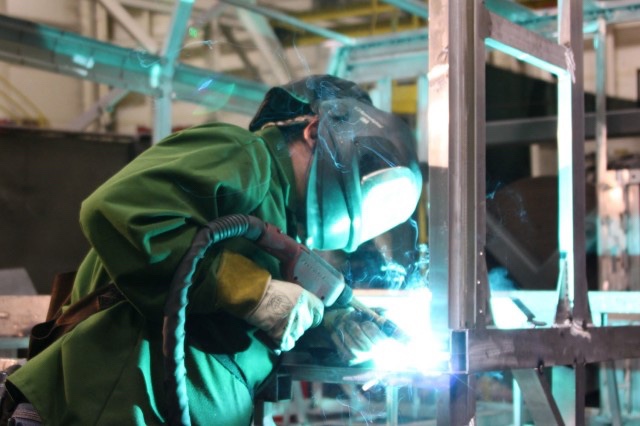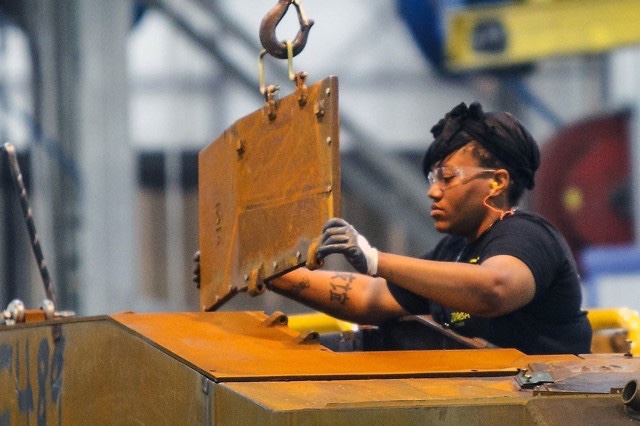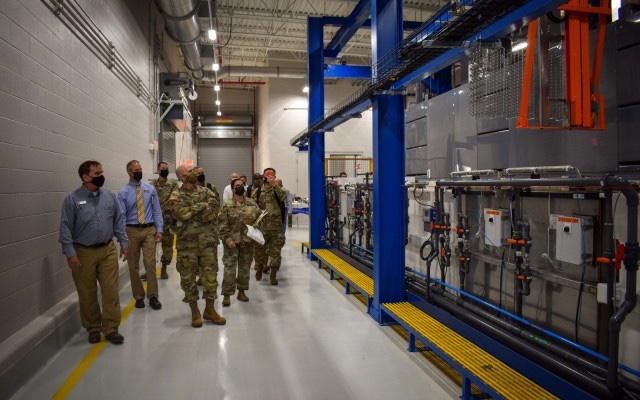
REDSTONE ARSENAL, Ala. — As the Army undergoes its greatest transformation in more than 40 years, senior leaders are taking steps to ensure persistent modernization of the Organic Industrial Base to sustain the next generation of Army equipment, current unit readiness and the ability to surge in support of contingencies.
The Army’s OIB Modernization Implementation Plan, led by Army Materiel Command, will modernize facilities, processes and the workforce across the 23 depots, arsenals and ammunition plants that manufacture and reset equipment, generating readiness and operational capability throughout Army formations. The Army OIB is comprised mostly of facilities that were built during World War II.
“The 15-year OIB modernization plan represents a once-in-a-generation chance to holistically modernize,” said Gen. Ed Daly, commanding general of AMC. “The plan provides a deliberate and comprehensive roadmap to a 21st century OIB focused on processes, facilities, equipment, workforce, data and information technology, as well as energy and cyber resilience.”
Last year, the Army stood up an OIB Modernization Task Force with experts from across the service. The task force has collaborated over a series of planning sessions, site visits and war games to develop a holistic investment plan to bring the OIB into the 21st century, infuse industry best practices and refine human capital management structures to maximize the skills and capabilities of the workforce.

“We are exploring new production processes to enhance capacity and improve resiliency, rebuild organic capabilities and develop new ways to leverage innovation technologies,” said Doug Bush, the Assistant Secretary of the Army for Acquisition, Logistics, and Technology.
The 15-year OIB Modernization Implementation Plan synchronizes a cost-neutral investment of an estimated $16 billion in three phases: Build 21st Century Capability for the Future (Fiscal Years 24-28); Continue to Build Capabilities and Attack Vulnerabilities (FY29-33); and Maintain and Sustain OIB Investments (FY34-38).
“The first phase is getting at the most critical processes and capabilities that we need immediately,” said Daly. “The second phase is really expanding those 21st century capabilities and reducing our vulnerabilities, and then the third phase is continuing to expand beyond that and into the future.”
ASA(ALT) and AMC, in collaboration with the Secretariat, Department of the Army partners, academia and industry, built the OIB MIP from the 2019 Army Modernization Strategy and 2019 Army Organic Industrial Base Strategy. These investments are tied directly to the Army’s signature modernization efforts, ensuring that the OIB is ready to sustain the next generation of Army equipment.

“History is replete with examples of the OIB’s criticality,” said Daly. “This is getting at the continuance of that legacy. It is ensuring the OIB can better support surge capacity for Large Scale Combat Operations, reducing single points of failure and mitigating supply chain vulnerabilities.”
A key piece of these modernization efforts is empowering the OIB workforce, approximately 32,000 employees who work in more than 240 different job fields, ranging from aircraft mechanics, machine tool operators, welders and machinists.
“Our artisan workforce provide the best equipment the world has ever seen, and it is their dedication that lets a warfighter know when they take a piece of equipment on the battlefield, it will survive enemy contact,” said Daly. “They are the backbone of the OIB. To meet the Army’s future needs, we need to ensure we are recruiting, training and retaining the next generation of artisans. We must identify and prioritize the jobs and skill sets needed to repair the Army’s future equipment.”
A living document, the OIB MIP was developed through data-driven decisions tied to the Army’s priorities of People, Readiness and Modernization. The OIB Modernization Task Force transitioned the 23 sites from having separate, hard-copy master plans to using an enterprise data repository that can show real-time updates and information.
“It’s dynamic, flexible in nature and it will be revisited on an annual basis,” said Daly.
By Megan Gully, U.S. Army Materiel Command Public Affairs

